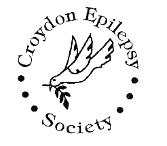Seizure Classification
Tonic-clonic (major) seizures
Tonic means stiffening. Clonic means jerking.
In these seizures the person is both stiff and jerking. The body stiffens and the person usually falls. Typically a period of stiffening lasting about half a minute is followed by jerking, which may last a minute or two in most cases.
Tonic seizure
The body stiffens. This type of seizure is sometimes heralded by a cry because the muscles of the chest wall may also stiffen, causing the air to be pushed out against partly closed vocal chords. These seizures may result in falls. There is no jerking with a pure tonic seizure.
Complex partial seizure
This is a partial seizure that occurs with some impairment of awareness, although the person is not usually completely unconscious. The person may simply be staring and `switched off’ or the seizure may involve automatisms, which are apparently purposeless movements, such as repeated lip-licking, lip smacking, swallowing, rubbing, picking or climbing movements. A variety of other movements may occur.
Simple partial seizure
This is a partial seizure that occurs while the person is fully aware. A simple partial seizure may involve funny feelings in the abdomen, head or elsewhere. It may involve movement, such as twitching of the thumb or the corner of the mouth, sensation or the so called autonomic nervous system, resulting in changes in the heart rate, perspiring or tummy rumbling.
Aura
An aura is often referred to as a warning of a seizure, but it is actually a type of simple partial seizure. It typically lasts a few seconds and involves odd sensations, such as funny feelings in the abdomen or head, strange odours (experienced but not actually present) or flashing lights. An aura often precedes a more obvious seizure, for example a complex partial seizure.
Myoclonic jerk
There is a sharp jerk of the limbs, typically the upper limbs, but sometimes the lower limbs or the whole body may be involved. Some myoclonic jerks may occur very frequently in the morning and may be associated with apparent clumsiness. Sometimes myoclonic jerks also increase in the evening, when a person is tired
Atonic Drop attack
An atonic drop attacks are exactly the opposite to a tonic seizure. In an atonic seizure all muscle stiffness is suddenly lost and the person crashes to the floor. In a brief atonic seizure the knees sag, but the person recovers without actually falling. Injury is quite likely to occur with atonic seizures.
Absence Seizures
The person ‘switches off’ and may be out of touch for a few seconds, typically 5-10 seconds. Sometimes this is accompanied by blinking of the eyelids. If the person is walking he/she does not usually fall, although the body may sag. The head may nod slightly in some absence seizures. Each absence seizure usually has a sharp onset and offset, but hundreds or thousands of these seizures can occur daily and sometimes they occur so frequently that there is no clear beginning and ending to the seizures.
Nonconvulsive status
Absence seizures occurring so frequently that the person is in a constant state of impaired awareness. A similar situation can arise with very prolonged complex partial seizures. Nonconvulsive status can last for long periods. This classification would not generally be used if the condition lasted less than 20 minutes.
Please note. The classification in this document is still widely used, although the ILAE has suggested a revised terminology (Berg et al. Epilepsia 2010).
Information provided by Prof Besag -Oct 2009
Reviewed March 2014
